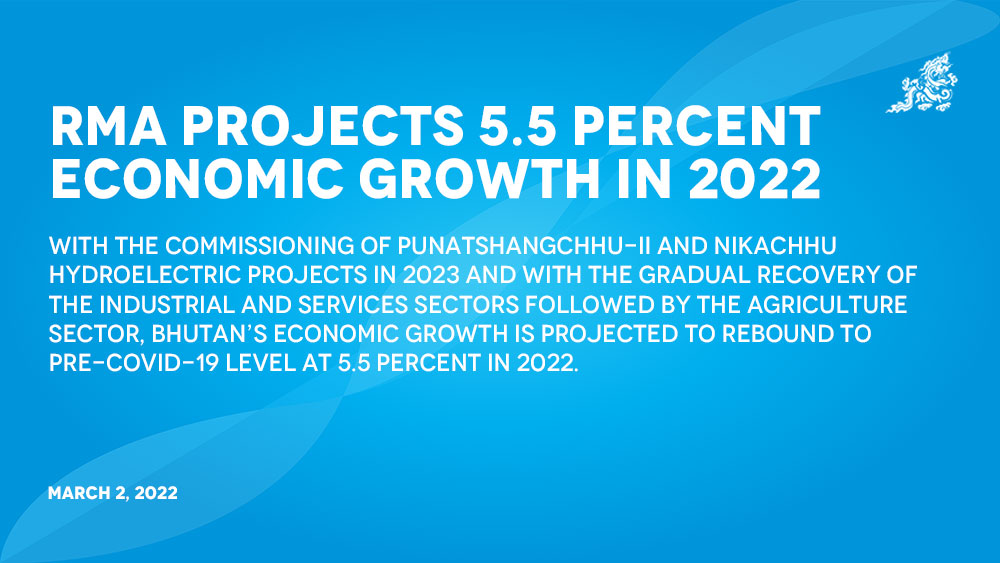Dechen Dolkar
With the commissioning of Punatshangchhu-II and Nikachhu hydroelectric projects in 2023 and with the gradual recovery of the industrial and services sectors followed by the agriculture sector, Bhutan’s economic growth is projected to rebound to pre-Covid-19 level at 5.5 percent in 2022.
According to the annual report of the Royal Monetary Authority (RMA) 2021 the domestic economy was projected to revive to 3.3 percent in 2021 and by 5.3 percent in 2023.
The report states that upward revision was attributed to based on improvement in economic activities in the agriculture sector by 6.8 percent, mainly due to an increase in crops and livestock production.
Various measures to boost agricultural productivity have been implemented during the pandemic.
The report states that the hydropower sector continued to exhibit resilience and remained the primary contributor to economic growth. The sector is expected to grow by 1.6 percent in 2021.
However, improvement in the supply chain within the country has been an ongoing effort of the government. On the demand side, the total consumption, which constitutes 74.2 percent of total output, is expected to increase by 20.7 percent in 2021, due to an increase in both private and public consumption.
“Further, public investment is estimated to increase by 31.6 percent as part of countercyclical fiscal policy measures against the pandemic in the medium term.
The private investment, on the other hand, is expected to grow by 2.8 percent,” it states.
The report states that though the pandemic has caused disruptions in the labour market, it has in fact triggered the government and other agencies to make innovative and impactful interventions from both the demand and supply front in the labour market.
The RMA stated that the inflationary pressure in Bhutan is determined largely by exogenous factors, the general price level in the country will be directly impacted by this development, anticipating the inflationary pressure within the range of 5 to 7 percent over the medium-term.
“With accelerated government investment activities, economic activities are anticipated to pick up in various sectors, contributing to the growth in tax revenue,” the report states. The economic activities are likely to pick up including tourism receipts (SDF and Visa Fees) on account of mass vaccination and reopening of the economy in a calibrated manner.
Consequently, sales tax collection from hotels, airport tax, corporate income tax, and business income tax from tourism and allied businesses are also expected to gradually improve.
The tax revenue during the FY 2021/22 is expected to grow by 25 percent from -19 percent in FY 2020/21.
It also states that the current account imbalance is expected to improve in the medium-term due to gradual relaxation in trade restrictions and financial flows coupled with the completion of major hydropower projects.
With the increase in the volume of trade, the overall trade deficit is expected to increase to 12.5 percent of GDP in FY 2021/22 from 7.3 percent of GDP in the previous year, largely contributed by the increase in imports against a marginal increase in exports.
The report states that the trade deficit is projected to improve from the FY 2022/23 onwards with hydropower export expected to grow by 27.4 percent with the commissioning of two new hydropower projects in 2023.
On the other hand, total import is anticipated to grow by 17.7 percent amounting to Nu 77,342 million in FY 2021/22, witnessing a decreasing trend from FY 2022/23 onwards in the medium-term.


